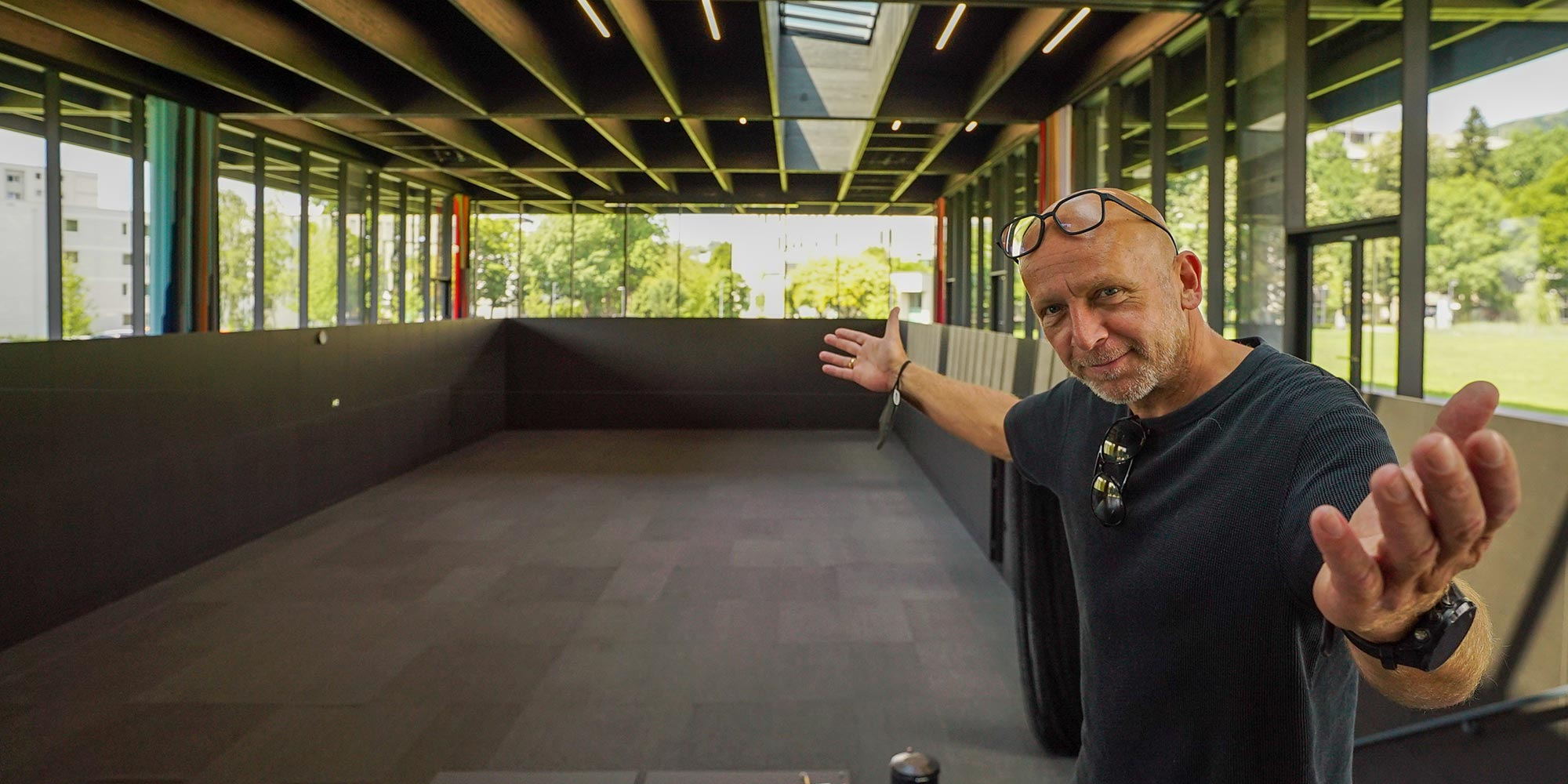There’s still a month to go until the Ars Electronica Festival 2021 “A New Digital Deal” gets underway. Preparations are in full swing, the festival team is in constant communication with partners, projects are being fleshed out, plans are being refined. Since July, the entire festival team has been on site at the campus of Johannes Kepler University. In this article, Martin Honzik, Managing Director and CCO Ars Electronica gives us a sneak peek at the various festival venues and tells us more about each location.
Mid-month, the first trailer for the Ars Electronica Festival for Art, Technology and Society will also be unveiled. From September 8 to 12, the festival will take place not only in Linz (Austria) and 86 other Ars Electronica Gardens around the globe, but also online, presenting itself as a dual event – with exhibitions, concerts, talks, conferences, workshops, guided tours and other online offerings.
A few days later, the trailer for the 86 participating Ars Electronica Gardens around the world will follow.
At the end of August, we’ll be presenting the highlights of this year’s Ars Electronica Festival “A New Digital Deal” live from the Ars Electronica Center’s Deep Space 8K.
Christopher Sonnleitner, Head of Communications, provides another detailed summary of the highlights in this article, from Festival University to Pre-Opening to Innovation Day.
For the second part of the highlights, go here.
The Prix Ars Electronica through the ages
Since its founding in 1987, the Prix Ars Electronica has always functioned as a trend barometer and platform for the collection of current and future visions by artists* on the subject of “art, technology and society.” Emiko Ogawa, director of the Prix Ars Electronica, invites jury members* from three categories to explore what trends and tendencies can be discerned in the award-winning works this year, more than a year after the global pandemic.
Since 1998, now 23 years, the best works from the Prix Ars Electronica have been on display at the CyberArts exhibition at the OÖ Kulturquartier. To learn more about the approach and process, works on display, trends in dealing with the pandemic and the issues of the day, we spoke with Genoveva Rückert, curator, and Petra Fohringer, exhibition management from OÖ Landes-Kultur GmbH and with Emiko Ogawa, director of the Prix Ars Electronica.
The Oracle Has Spoken
Things are also happening at the Ars Electronica Center, with AI Oracle, a new interactive art installation that immerses visitors* in a futuristic cubic structure. Inside the cube, they are greeted by a robotic voice in a dystopian reality where an AI scans them, analyzes a long list of personal data, and decides on their future job. The scanning and data analysis processes are simulated by voices, sounds and light shows. By addressing the personal lives of visitors*, the installation aims to invite them to reflect on the ethical risks associated with potential discrimination by AI algorithms, which are already being used extensively in the work context.
A sea of lights made of drones
Nine years ago now, the aesthetic formations of a swarm of luminous quadrocopters in the night sky above Linz caused a worldwide sensation and excitement, inspiring the whole world to follow the trend. But these Spaxels were just the beginning of a long journey into the future of the Ars Electronica Futurelab. In The Art of Swarms, the sixth episode of the 25th Anniversary Series Inside Futurelab, key researcher and artist Peter Holzkorn sets out to trace that hidden structure behind this web of systems. In doing so, he reveals a wide range of possibilities for using it in the future for innovations at the boundary between art and technology.
And how it went on in September 2021, we’ll show you in the next part of our 2021 Year in Review.
